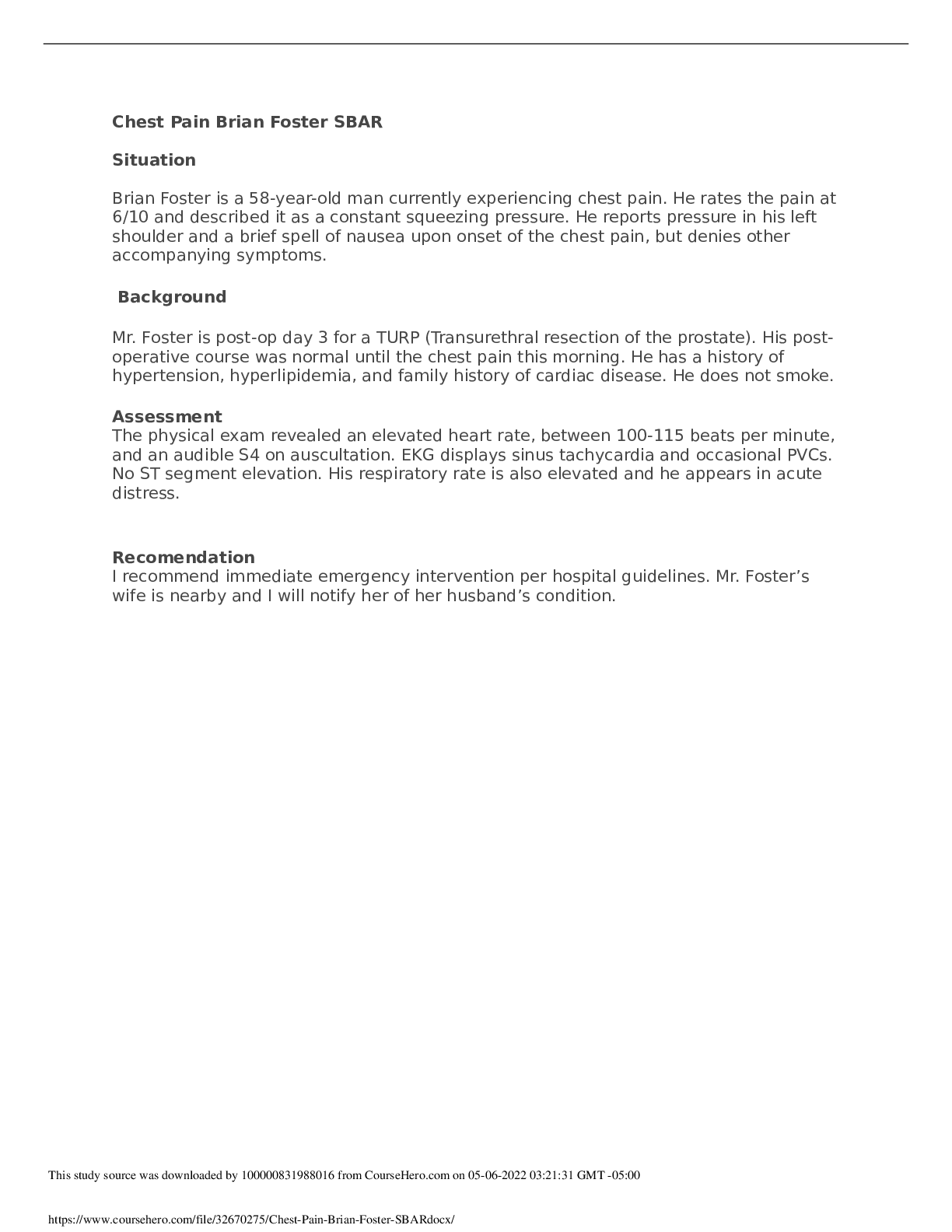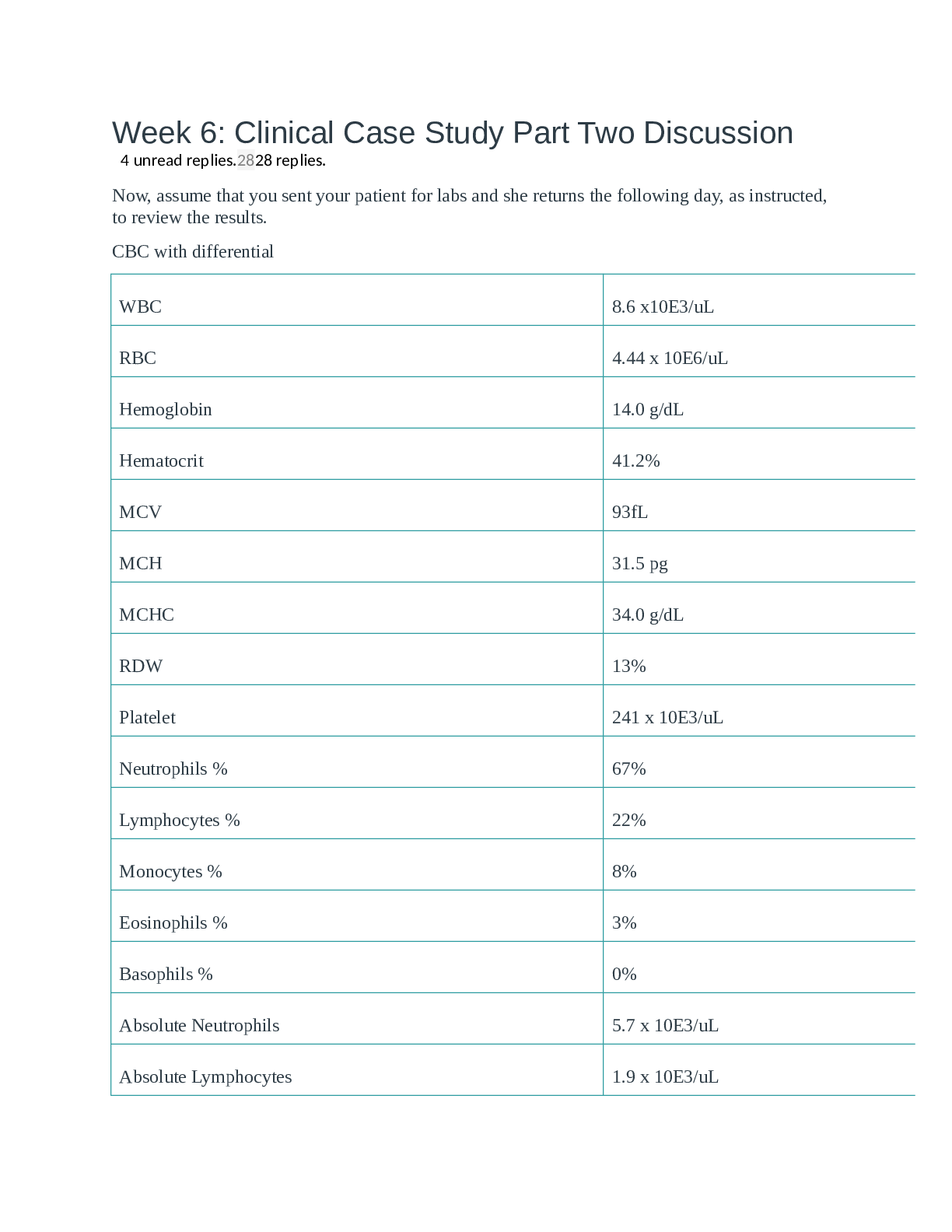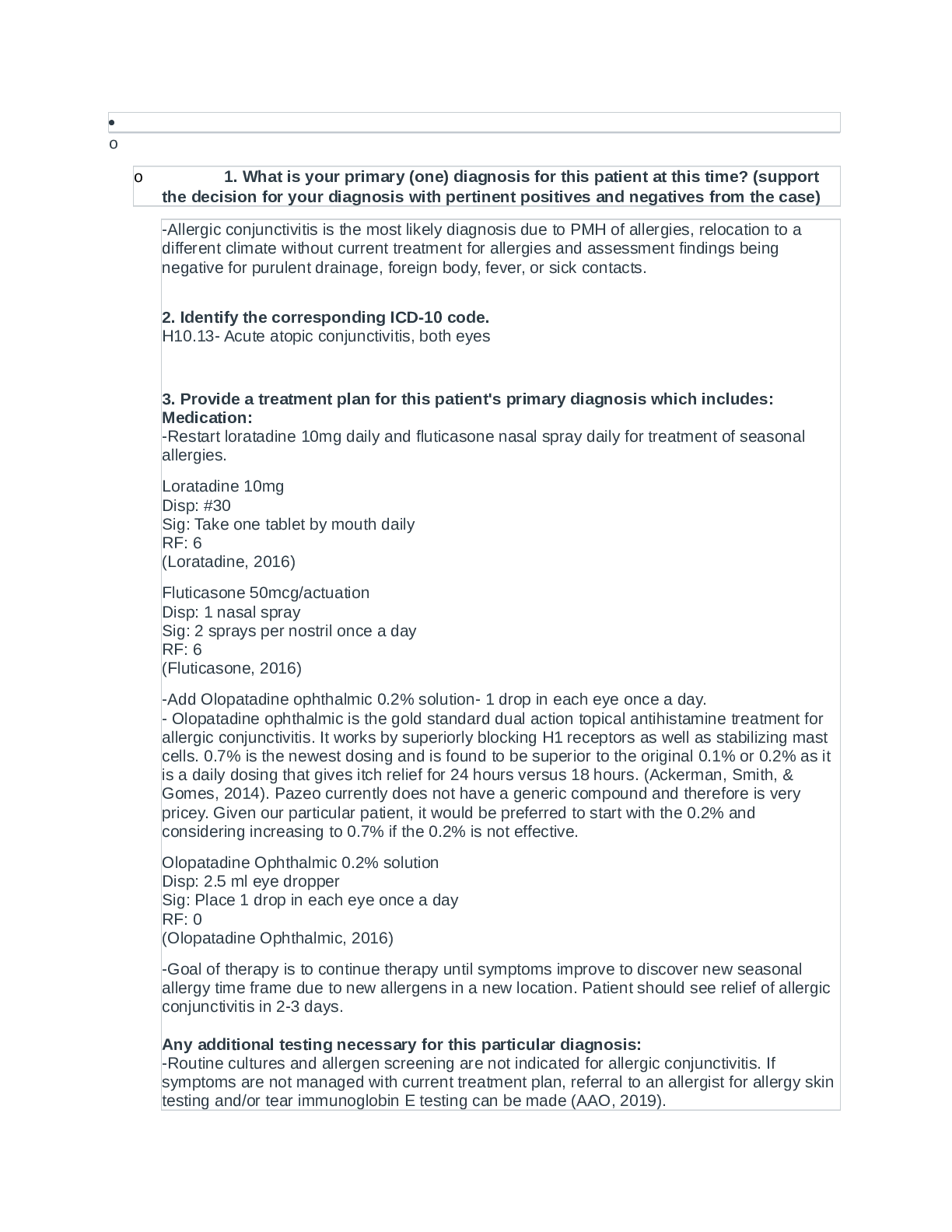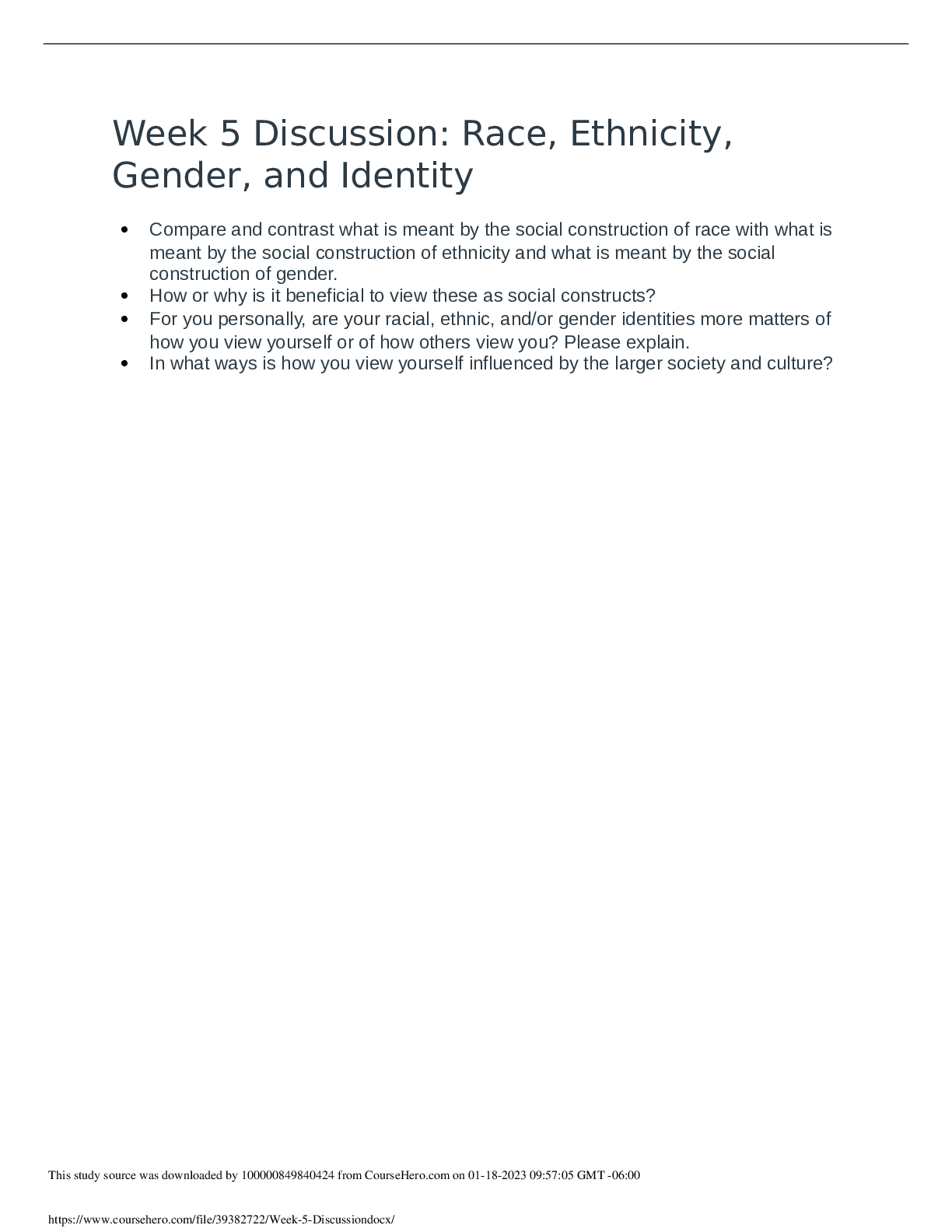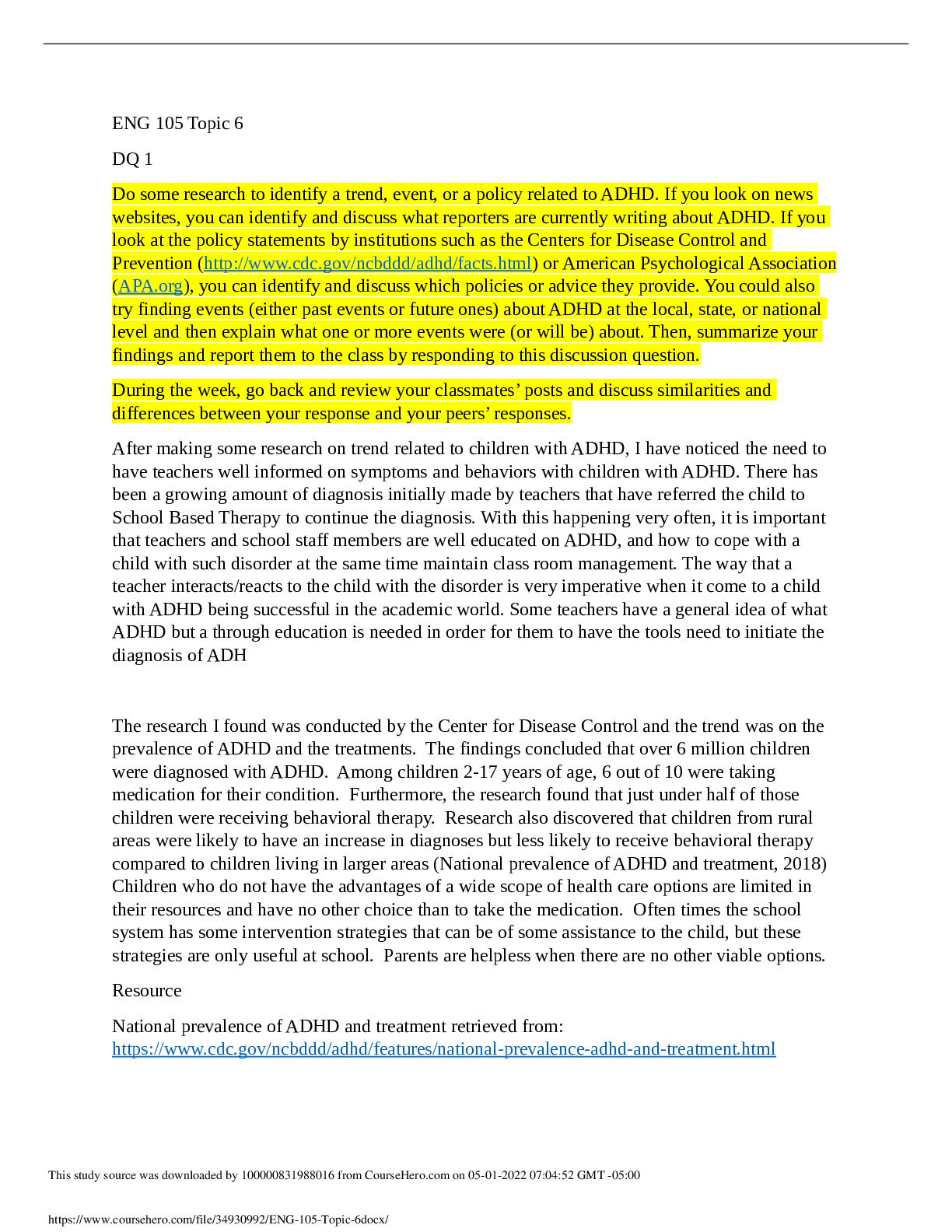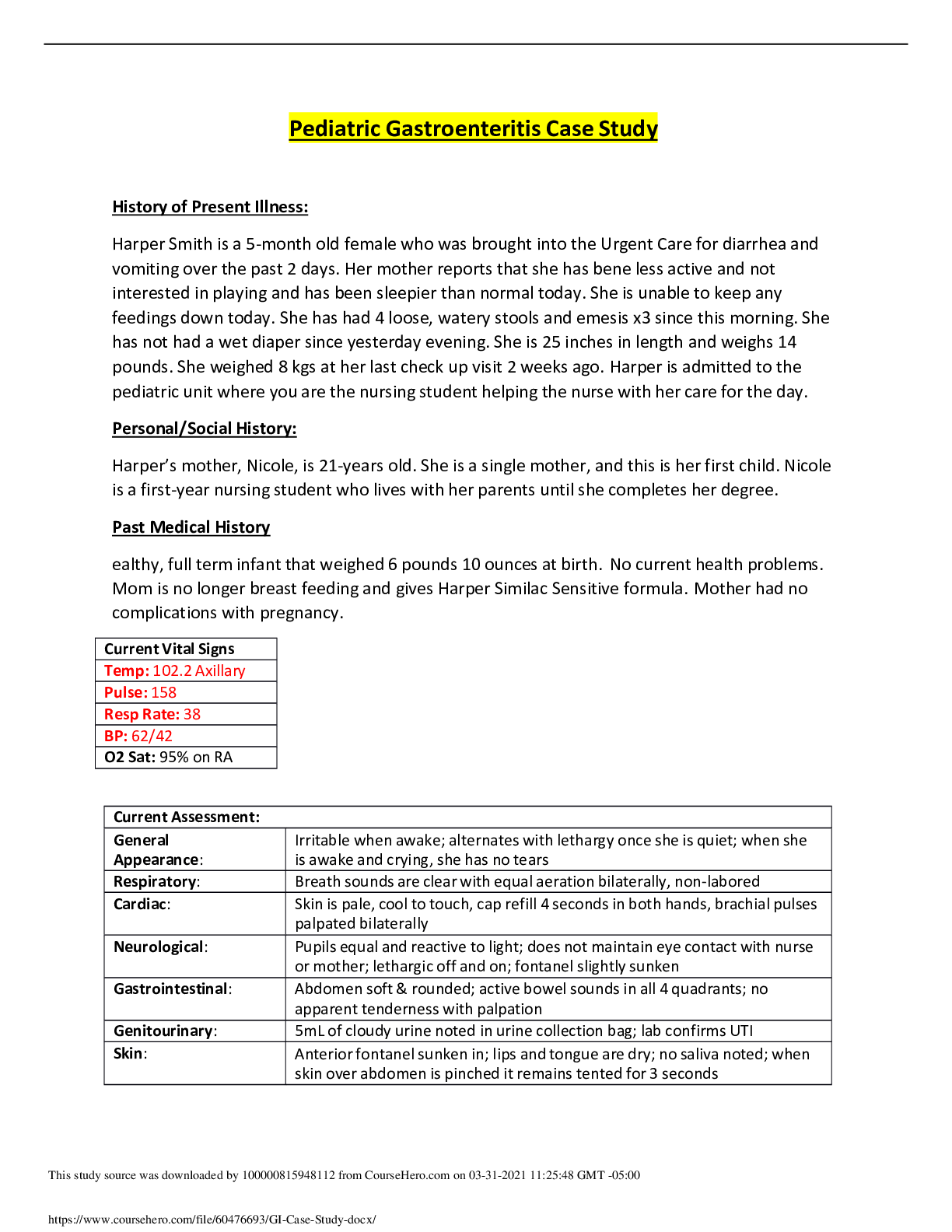*NURSING > CASE STUDY > NUR 112/NUR112 Pediatric Gastroenteritis Case Study - UNFOLDING Reasoning (All)
NUR 112/NUR112 Pediatric Gastroenteritis Case Study - UNFOLDING Reasoning
Document Content and Description Below
UNFOLDING Reasoning Case Study: STUDENT Pediatric Gastroenteritis History of Present Problem: Harper Anderson is a 5-month-old female who was brought into the physician’s office for diarrhea and... vomiting over the past two days. She had two loose large loose stools the first day and now her mother reports that she has been less active, is not interested in playing, and has been more sleepy today. She is unable to keep any feedings down today. She has had four loose, watery stools and emesis x3 this morning. She has not had a wet diaper since yesterday evening. She is 25 inches (63.5 cm) in length and weighs 14 pounds, 2 ounces (6.4 kg). She weighed 15 pounds, 2 ounces (6.86 kg) at her last office visit two weeks ago. Harper is a direct admit to the pediatric unit where you are the nurse responsible for her care. Personal/Social History: Harper’s mother Nicole is 21 years old. She is a single mother and this is her first child. Nicole is not currently working and lives with her parents. Though she has strong social support from her parents, she feels consistently overwhelmed as a new mother. Past Medical History (PMH): Healthy full-term infant that weighed 6 pounds 10 ounces (3.0 kg) at birth. No current health problems. Mom is no longer breast feeding and Harper is on formula. Mother had no complications with pregnancy. Has not had any immunizations from birth, including rotavirus RELEVANT Data from Present Problem: Clinical Significance: RELEVANT Data from Social History: Clinical Significance: Patient Care Begins: Current VS: Pain Assessment – FLACC Behavioral Pain Scale T: 102.2 F/39.0 C (axillary) Face: 1 P: 158 Legs: 0 R: 38 Activity: 1 BP: 62/42 Cry: 1 O2 sat: 95% RA Consolability: 2/Total score: 5/10 © 2016 Keith Rischer/www.KeithRN.com FLACC Behavioral Pain Scale What VS data are RELEVANT and must be recognized as clinically significant to the nurse? RELEVANT VS Data: Clinical Significance: What assessment data are RELEVANT that must be recognized as clinically significant by the nurse? RELEVANT Assessment Data: Clinical Significance: 0 1 2 Face Relaxed or smile Occasional grimace, frown, withdrawn Frequent frown, clenched jaw, quivering chin Legs Relaxed Uneasy, restless, tense Kicking or legs drawn up Activity Lying quietly, moves easily Squirming, tense Arched, rigid, or jerking Cry No cry (awake or asleep) Moans, whimpers. Occasional complaints Crying, sobs, screams, frequent complaints Consolability Content or relaxed Easy to console, distractible Difficult to console or comfort Each of the five categories is scored from 0-2, resulting in a total of 0-10 Current Assessment: GENERAL APPEARANCE: Irritable when awake, alternates with lethargy once quiet, when awake and crying, tears are not present RESP: Breath sounds clear with equal aeration bilaterally, non-labored CARDIAC: Skin is pale, cool to touch, cap refill 3–4 seconds in both hands, brachial pulses palpable bilaterally NEURO: Lethargic, does not maintain eye contact with mom or caregiver GI: Abdomen soft with hyperactive BS x4 quadrants, no apparent tenderness to palpation GU: 5 mL dark amber, cloudy urine noted in urine collection bag-sent to lab SKIN: Anterior fontanel depressed, eyes slightly sunken, lips and tongue are dry with no shiny saliva present, when skin over abd. is pinched, remains tented for 2–3 seconds © 2016 Keith Rischer/www.KeithRN.com Dehydration Assessment Scale for Pediatrics Circle all assessment findings RELEVANT to Harper. What degree of dehydration is present? Assessment Data: Minimal Dehydration: Mild to Mod. Dehydration Severe Dehydration Mental status Alert Restless, irritable Lethargic, unconscious Thirst Drinks normally Drinks eagerly Drinks poorly Heart rate Normal Normal to increased Tachycardia Quality of pulses Normal Normal to decreased Weak or non-palpable Breathing Normal Normal or fast Deep Eyes Normal Slightly sunken Deeply sunken Tears Present Decreased Absent Mouth and tongue Moist Dry Parched Skin fold Instant recoil Recoil < 2 seconds Recoil >2 seconds Capillary refill Normal Prolonged Prolonged or minimal Extremities Warm Cool Cold, mottled, cyanotic Urine output Normal Decreased Minimal Lab/Diagnostic Results: (Note: Lab norms are for a 5-month infant) What lab results are RELEVANT that must be recognized as clinically significant to the nurse? RELEVANT Lab(s): Clinical Significance: TREND: Improve/Worsening/Stable: [Show More]
Last updated: 2 years ago
Preview 1 out of 11 pages

Buy this document to get the full access instantly
Instant Download Access after purchase
Buy NowInstant download
We Accept:

Also available in bundle (1)

NUR 112/NUR112 Case Study UNFOLDING Reasoning Latest Updated 2022 All Rated A
NUR 112/NUR112 Case Study UNFOLDING Reasoning Latest Versions Already Graded A
By Nutmegs 3 years ago
$35
8
Reviews( 0 )
$10.00
Can't find what you want? Try our AI powered Search
Document information
Connected school, study & course
About the document
Uploaded On
Mar 22, 2022
Number of pages
11
Written in
Additional information
This document has been written for:
Uploaded
Mar 22, 2022
Downloads
0
Views
458




